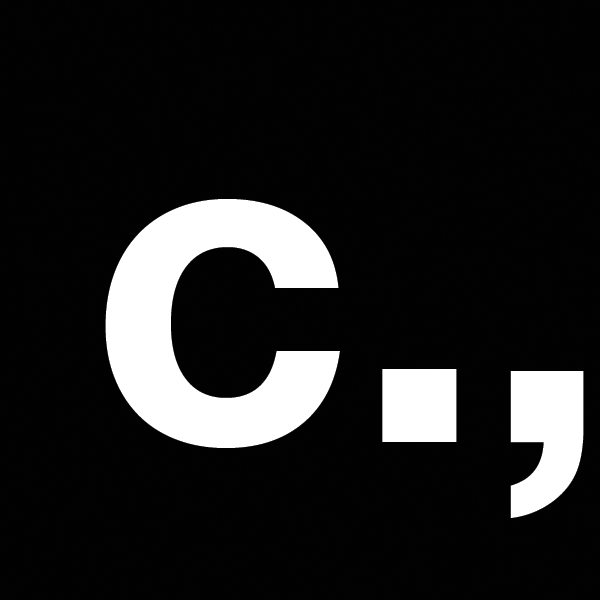SUPPLIED IDENTITY
visual studies
SAMUEL J. BRISSETT

BIOGRAPHY:
Samuel J Brissett holds a Master of Architecture from University of Minnesota. He is a designer at Alchemy Architects.
These studies are from Samuel’s Masters Final Project at the University of Minnesota, School of Architecture. MFP critic: Vahan Misakyan.
![]()
![]()
![]()
![]()
![]()
What is supplied identity?
The milieu of social media is an ecosystem of individuals interacting in a constant state of announcement and affirmation of their identity. Despite the digital presence of social media, the external expression of one’s self is often announced through objects. These objects collected and categorized into pieces produce a pluralistic identity. The attachment of one’s identity to objects supplants the presence and operation of the actors at a city scale. This project construes the city of San Francisco, CA as a simulation to explore the possibility of radical intersectionality among citizens in the city reinterpreting the physical location as operation rather than merely object. The starting points of this intersectionality are places where the citizen feels anonymity within their environment. Within these spaces of anonymity, new architectural programming is inserted to provide a proving ground for unfamiliar relationships between the city and the identity of its citizens. These new programs project a future in which tribal identities become dismantled, the citizen operates autonomously, and radical intersectionality is made manifest.
Self-expression has hit its limit. It is now a physical manifestation of the things we want to be. Something that is worthy of assessing eyes, upvotes, and shares. Constantly consuming our own indulgences, our own appearance; but not without the affirmation from those observing first. A need to reinvent oneself is the engine for this constant stream of picture posting, self capturing, and object collecting. Digital platforms have become an exponential stage of these self-expressions as an individual curates their expressions for the best possible observation; not for their peers, but for themselves. This has bled into the physio-social environment as objects are supposed to announce, “As this nationality I...”, “As this race I...”, “I strongly identify with….”, and “This is SO me...”. In this constant ploy of affirmation, the citizen is supplied their identity through the consensual vote of others. This is considered a freedom of expression but is only freedom of choice. In a neoliberal sense, identity is a product chosen from an illusory multitude that will express who they supposedly are. Once the object is expressed, the identity becomes categorized and the individual who holds it becomes immutable.
![]() LEFT: Mapping of neighborhoods based on how citizens in San Francisco, CA position themselves and neighborhood within the city. Data extracted from Craigslist©.
LEFT: Mapping of neighborhoods based on how citizens in San Francisco, CA position themselves and neighborhood within the city. Data extracted from Craigslist©.
RIGHT: Mapping of enclaves in San Francisco, CA. Data extracted from Facebook©.
In order to visualize how citizens within a city territorialize their physical environment through their identity, the profiles of thousands of residents in San Francisco, CA were scraped. This method was conceived by first experimenting with the idea that the physical boundaries which define cities, such as neighborhoods, zoning, and street grids are not how residents visualize or interact with the social substance of cities. In an initial inquiry, the locations of hundreds of houses for sale in San Francisco were accumulated from Craigslist. The data scraped from the open-source platform began to blur the territorial demarcations that are consistently used to define the object boundaries in San Francisco. This inquiry catalyzed the remapping of San Francisco. These maps territorialize and claim urban space as they are lived and understood tacitly by the diverse citizens who reside there. Territories for which the inhabitants themselves identify.
![]()
![]()
These studies are from Samuel’s Masters Final Project at the University of Minnesota, School of Architecture. MFP critic: Vahan Misakyan.
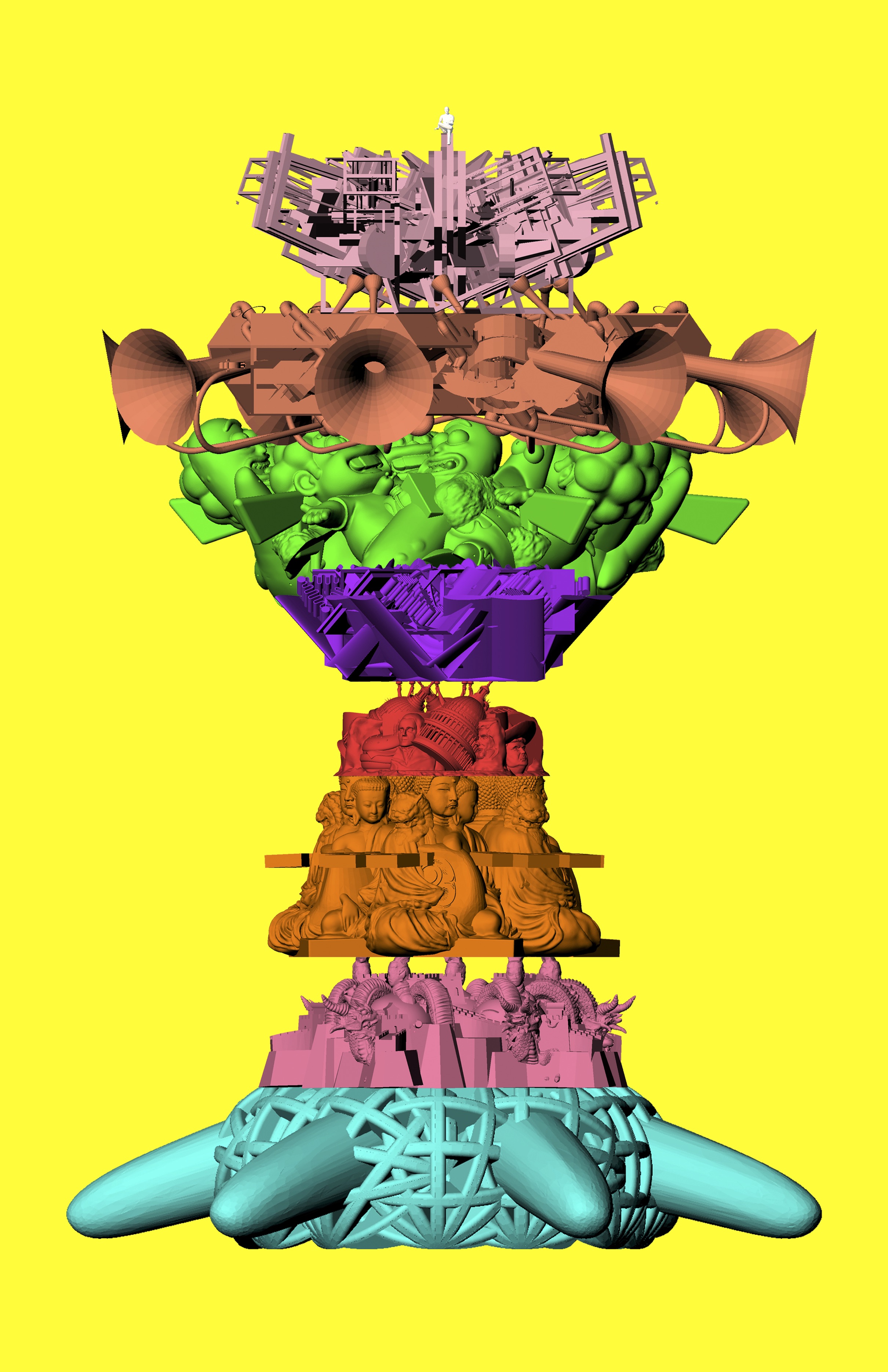
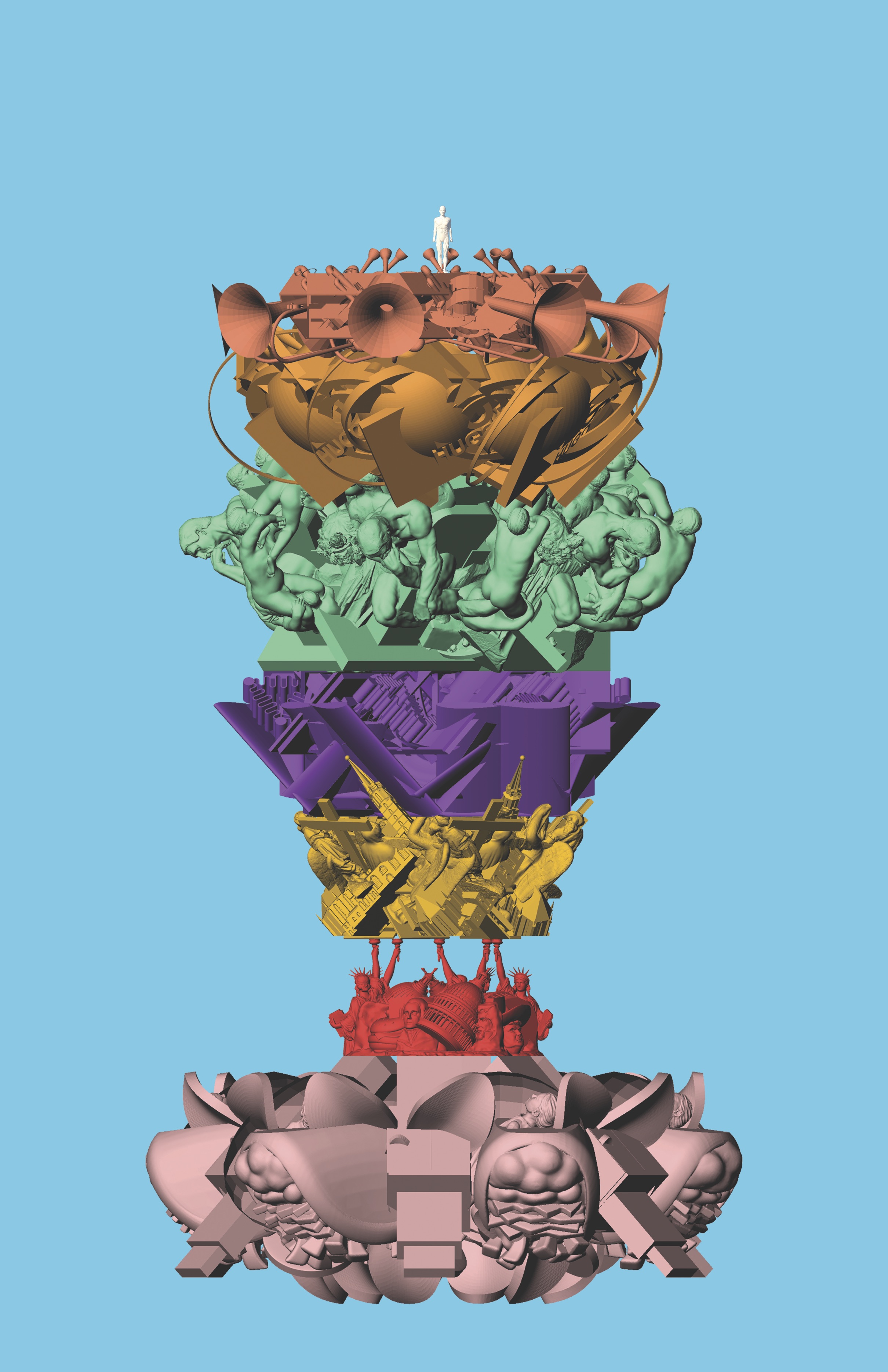

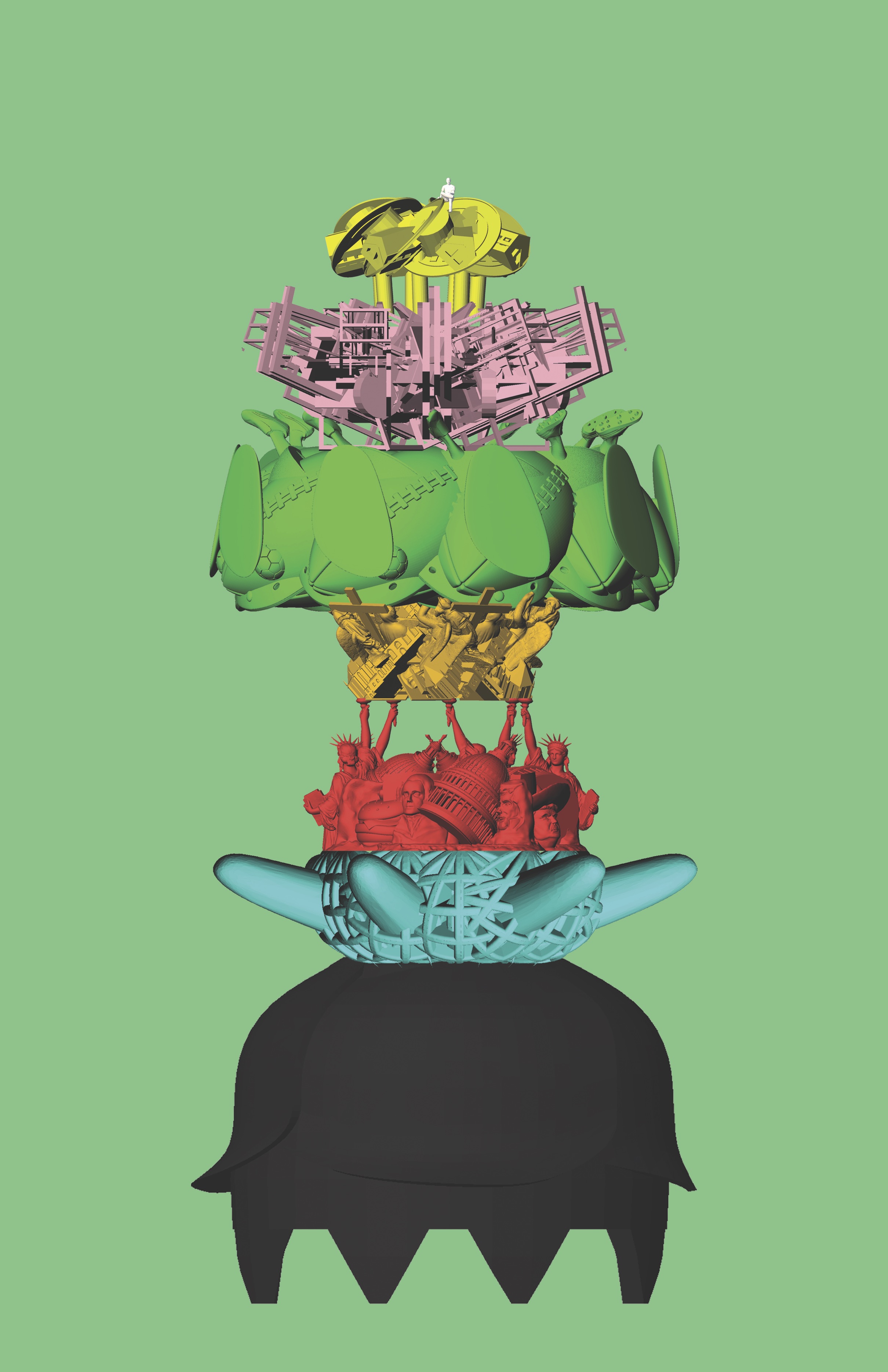

What is supplied identity?
The milieu of social media is an ecosystem of individuals interacting in a constant state of announcement and affirmation of their identity. Despite the digital presence of social media, the external expression of one’s self is often announced through objects. These objects collected and categorized into pieces produce a pluralistic identity. The attachment of one’s identity to objects supplants the presence and operation of the actors at a city scale. This project construes the city of San Francisco, CA as a simulation to explore the possibility of radical intersectionality among citizens in the city reinterpreting the physical location as operation rather than merely object. The starting points of this intersectionality are places where the citizen feels anonymity within their environment. Within these spaces of anonymity, new architectural programming is inserted to provide a proving ground for unfamiliar relationships between the city and the identity of its citizens. These new programs project a future in which tribal identities become dismantled, the citizen operates autonomously, and radical intersectionality is made manifest.
Self-expression has hit its limit. It is now a physical manifestation of the things we want to be. Something that is worthy of assessing eyes, upvotes, and shares. Constantly consuming our own indulgences, our own appearance; but not without the affirmation from those observing first. A need to reinvent oneself is the engine for this constant stream of picture posting, self capturing, and object collecting. Digital platforms have become an exponential stage of these self-expressions as an individual curates their expressions for the best possible observation; not for their peers, but for themselves. This has bled into the physio-social environment as objects are supposed to announce, “As this nationality I...”, “As this race I...”, “I strongly identify with….”, and “This is SO me...”. In this constant ploy of affirmation, the citizen is supplied their identity through the consensual vote of others. This is considered a freedom of expression but is only freedom of choice. In a neoliberal sense, identity is a product chosen from an illusory multitude that will express who they supposedly are. Once the object is expressed, the identity becomes categorized and the individual who holds it becomes immutable.
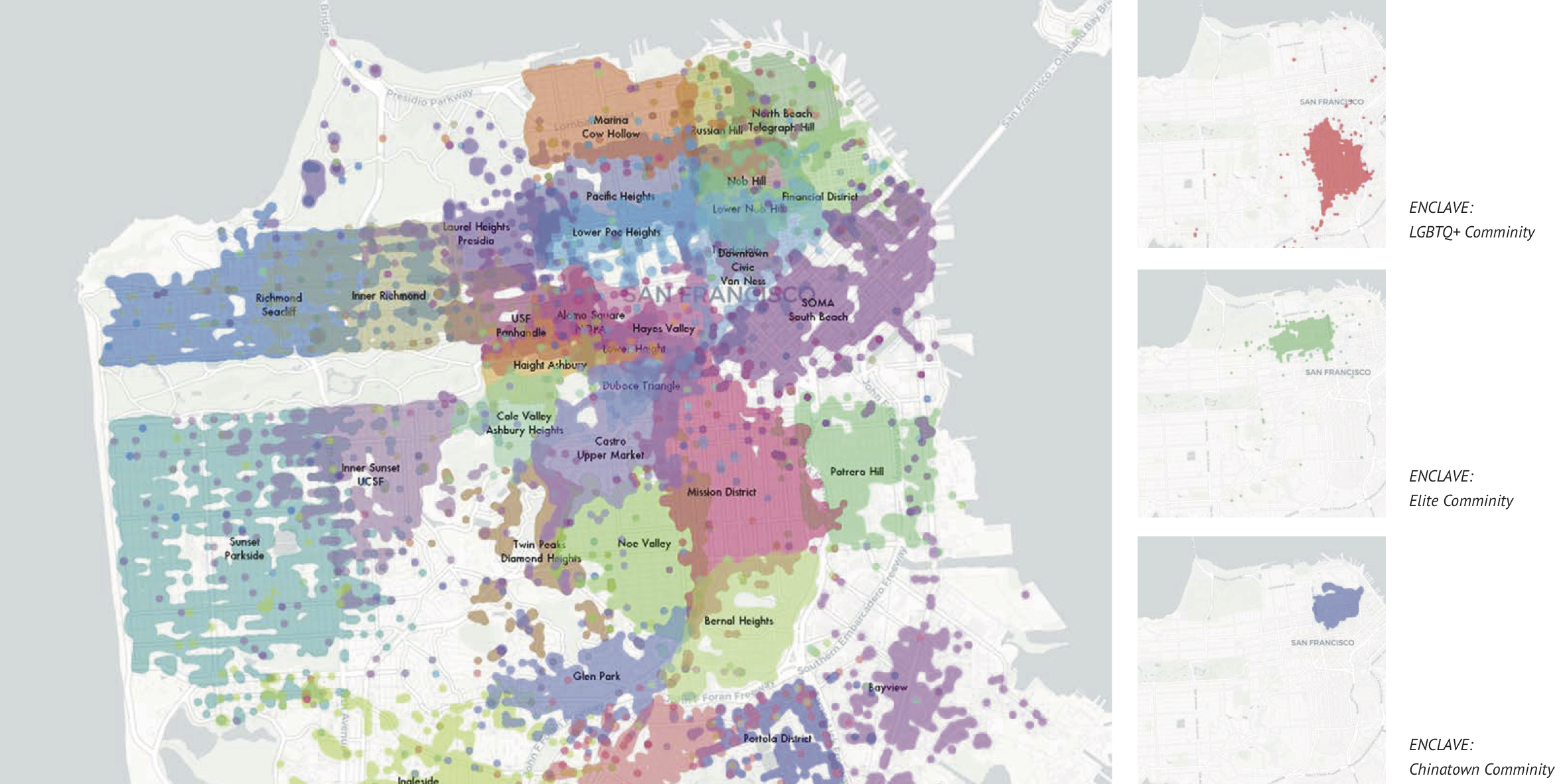 LEFT: Mapping of neighborhoods based on how citizens in San Francisco, CA position themselves and neighborhood within the city. Data extracted from Craigslist©.
LEFT: Mapping of neighborhoods based on how citizens in San Francisco, CA position themselves and neighborhood within the city. Data extracted from Craigslist©.RIGHT: Mapping of enclaves in San Francisco, CA. Data extracted from Facebook©.
In order to visualize how citizens within a city territorialize their physical environment through their identity, the profiles of thousands of residents in San Francisco, CA were scraped. This method was conceived by first experimenting with the idea that the physical boundaries which define cities, such as neighborhoods, zoning, and street grids are not how residents visualize or interact with the social substance of cities. In an initial inquiry, the locations of hundreds of houses for sale in San Francisco were accumulated from Craigslist. The data scraped from the open-source platform began to blur the territorial demarcations that are consistently used to define the object boundaries in San Francisco. This inquiry catalyzed the remapping of San Francisco. These maps territorialize and claim urban space as they are lived and understood tacitly by the diverse citizens who reside there. Territories for which the inhabitants themselves identify.


